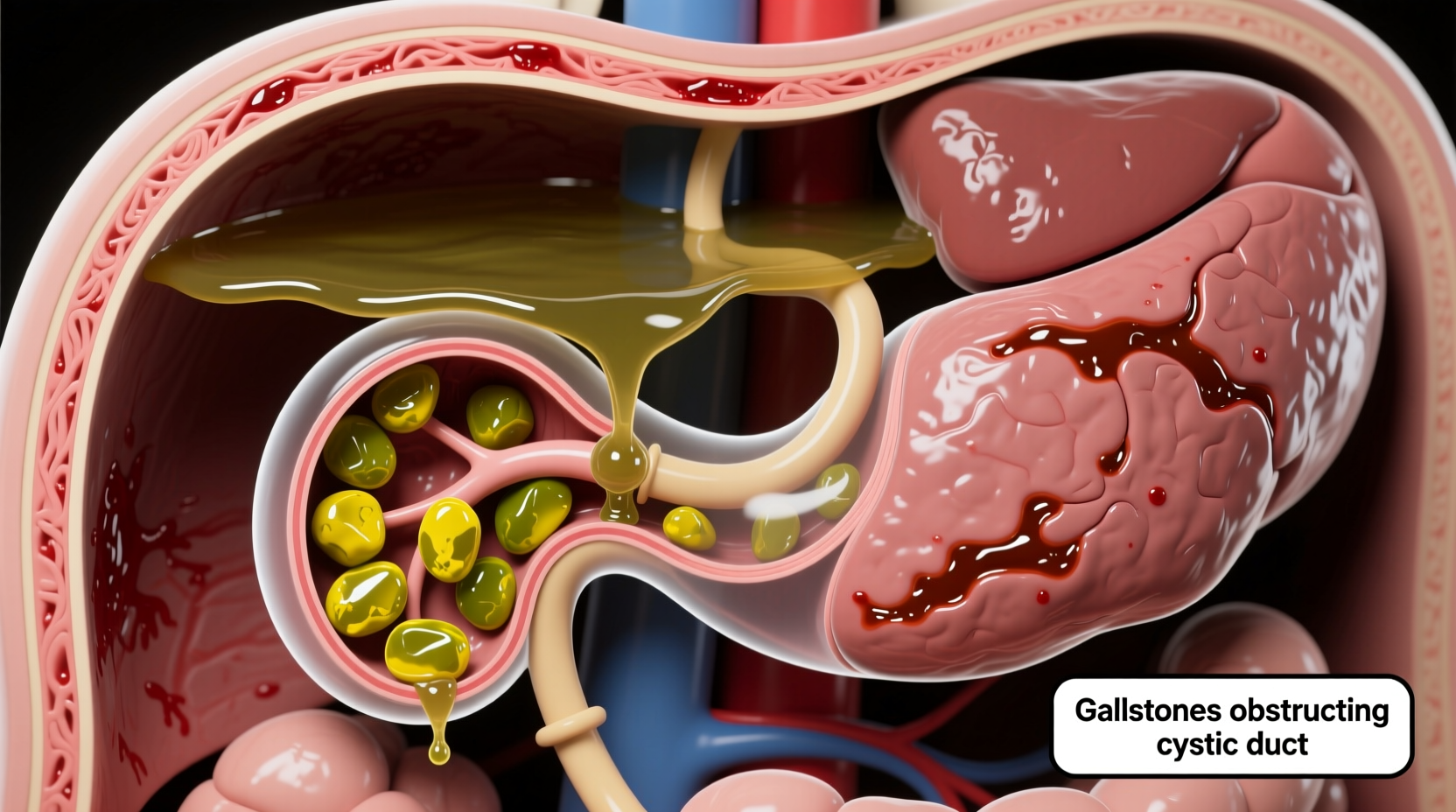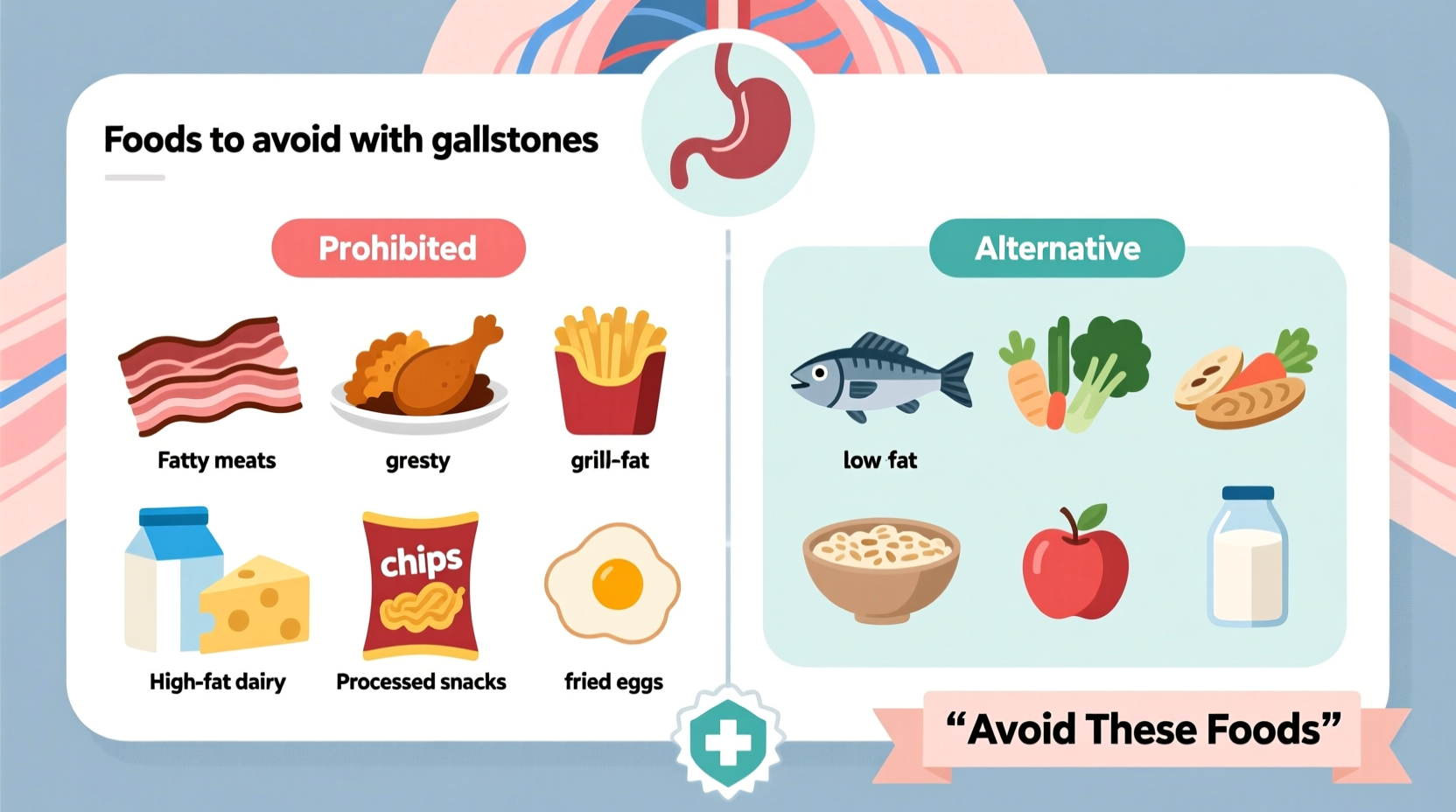When gallstones strike, knowing exactly what to eat—and what to avoid—can mean the difference between comfort and excruciating pain. This guide delivers evidence-based dietary strategies that actually work, backed by gastroenterology research and clinical practice.
Why Certain Foods Trigger Gallstone Attacks
Your gallbladder stores bile, a digestive fluid that breaks down fats. When you consume high-fat foods, your gallbladder contracts forcefully to release bile into your small intestine. With gallstones present, this contraction can cause stones to block ducts, triggering intense pain known as biliary colic.
According to the National Institute of Diabetes and Digestive and Kidney Diseases (NIDDK), approximately 1 in 10 adults in the United States has gallstones, and dietary management remains a cornerstone of symptom control for those not requiring immediate surgery.
The Immediate Danger Zone: Foods That Must Be Avoided
These foods consistently trigger gallbladder attacks in people with gallstones. Eliminating them provides the fastest symptom relief:
| Food Category | Specific Items to Avoid | Why It's Problematic |
|---|---|---|
| Fried & Greasy Foods | Fried chicken, french fries, onion rings, tempura | Extremely high fat content forces gallbladder to work overtime |
| Fatty Meats | Bacon, sausage, ribs, brisket, marbled steaks | Saturated fats trigger strong gallbladder contractions |
| Full-Fat Dairy | Whole milk, cream, ice cream, full-fat cheese | High saturated fat content directly stimulates gallbladder |
| Processed Foods | Pastries, cookies, crackers with hydrogenated oils | Trans fats increase inflammation and cholesterol saturation |
The Gallstone Formation Timeline: How Diet Contributes
Understanding how gallstones develop helps explain why certain foods are problematic. The process typically unfolds like this:
- Cholesterol Imbalance: Bile becomes oversaturated with cholesterol (often from high-fat diets)
- Crystal Formation: Cholesterol crystals begin forming in the gallbladder (can take months to years)
- Stone Development: Crystals aggregate into solid stones (size ranges from sand-like to golf ball)
- Symptom Onset: Stones block ducts during gallbladder contraction, causing pain after fatty meals
This progression explains why consistently avoiding high-fat foods is crucial—not just during painful episodes but as ongoing management. The Mayo Clinic emphasizes that "repeated episodes of pain can lead to chronic gallbladder inflammation and more serious complications."

Foods That May Trigger Symptoms: The Caution Zone
While not universally problematic, these foods cause issues for many gallstone sufferers. Track your personal reactions:
- Eggs: Particularly yolks are high in cholesterol; try egg whites initially
- Nuts and Seeds: High in fat though generally healthy; consume in small portions
- Avocados: Healthy fats but still substantial fat content; limit to 1/4 at a time
- Spicy Foods: Can trigger symptoms in some individuals but not all
- Carbonated Beverages: May cause bloating that exacerbates discomfort
Hidden Fat Traps in Your Kitchen
Gallstone sufferers often unknowingly consume problematic fats through these common items:
- Salad Dressings: Many "light" versions still contain significant oils
- Gravies and Sauces: Often made with butter or meat drippings
- Processed Meats: Even "lean" deli meats contain hidden fats
- Baked Goods: Cookies, cakes, and muffins typically use substantial fats
- "Healthy" Oils: Olive and coconut oil are still 100% fat (use sparingly)
When reading labels, look for products with less than 3g of fat per serving. The American College of Gastroenterology recommends keeping total fat intake below 40g daily during acute symptom management.
Context Matters: When Some Fats Might Be Acceptable
Your individual tolerance depends on several factors:
- Stone Size and Number: Smaller stones may allow slightly more dietary flexibility
- Current Inflammation Level: During active attacks, even moderate fats may be problematic
- Time Since Diagnosis: Newly diagnosed patients often need stricter initial restrictions
- Surgical Status: Post-cholecystectomy patients typically tolerate more fats long-term
A 2022 study published in the American Journal of Gastroenterology found that approximately 30% of gallstone patients could gradually reintroduce moderate-fat foods after 6-8 weeks of strict avoidance, but this should always be done under medical supervision.
Building Your Gallstone-Friendly Plate
Transition to a sustainable eating pattern with these practical steps:
- Start with breakfast: Swap sausage for egg whites or Greek yogurt
- Master lean proteins: Choose skinless chicken, fish, or plant-based options
- Embrace cooking methods: Steam, bake, or poach instead of frying
- Track your triggers: Keep a food-symptom journal for two weeks
- Gradual reintroduction: Add one potentially problematic food every 3 days
Registered dietitians specializing in digestive health often recommend the "3-3-3 approach" during the initial phase: three meals daily with no more than 3g of fat per meal and 3g of fat for each snack.
When to Seek Professional Guidance
Dietary changes alone may not suffice if you experience:
- Pain lasting more than 5 hours
- Fever or chills accompanying abdominal pain
- Jaundice (yellowing of skin or eyes)
- Nausea and vomiting that prevents eating
These symptoms may indicate complications requiring medical intervention. The American Gastroenterological Association notes that "approximately 20% of people with gallstones will develop complications requiring treatment."











 浙公网安备
33010002000092号
浙公网安备
33010002000092号 浙B2-20120091-4
浙B2-20120091-4